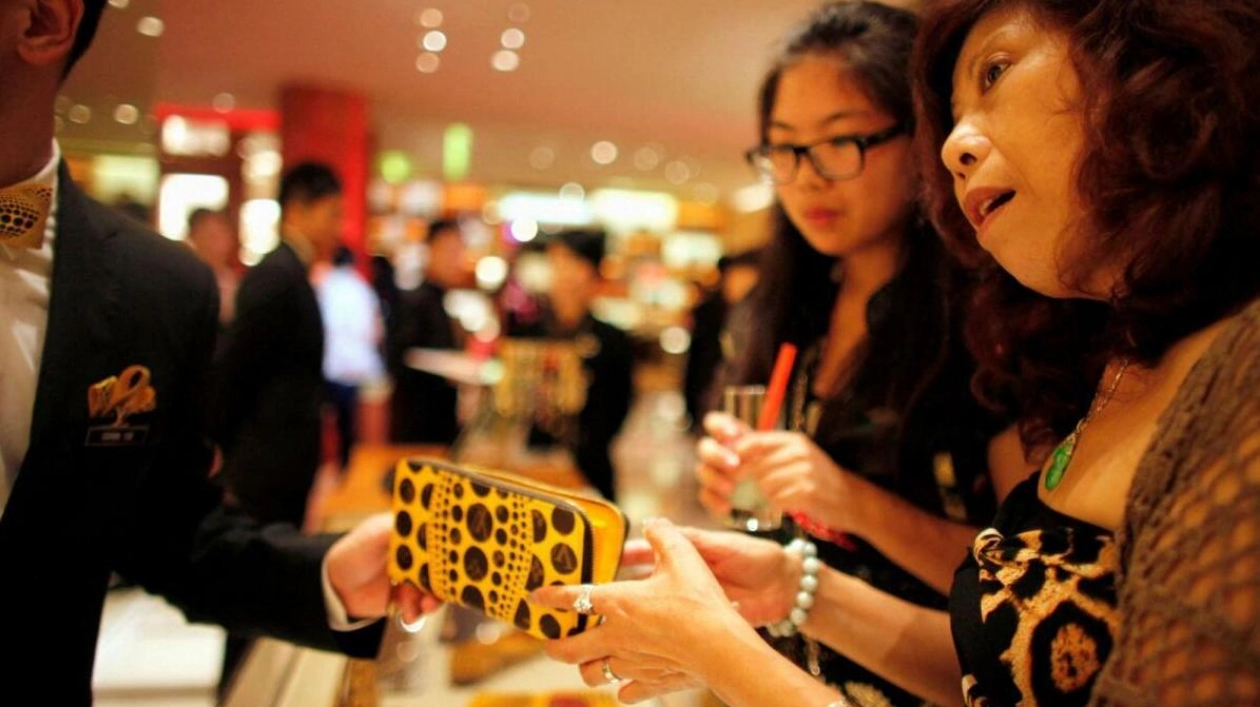A woman is seen shopping at a Louis Vuitton store in downtown Shanghai. — Reuters file
China's second-hand and grey markets for luxury goods are experiencing significant growth, driven by price increases from luxury brands amidst a sluggish economy. This trend is causing concern for major players like LVMH. LVMH, the world's largest luxury group, recently reported a three percent decline in quarterly profit, missing estimates and marking its first quarterly sales drop since the pandemic. This decline was attributed to weakened demand in China and Japan. Similarly, Italy's Salvatore Ferragamo reported a drop in quarterly revenue due to a slowdown in demand from China.
“The elephant in the room is that, in China, as long as price gaps (between China and other countries) exist, there is the opportunity for price-sensitive consumers to turn to the grey market,” said Max Piero, CEO of luxury intelligence consultancy Re-Hub, which monitors grey market luxury purchases in China. This market, estimated to be worth $57 billion annually, has been boosted by platforms like DeWu, where luxury products, often sourced overseas, are sold at discounts ranging from 20 percent to over 50 percent compared to prices at Chinese flagship stores. Re-Hub estimates that sales across 48 brands on DeWu rose 19 percent year-on-year in the second quarter to over 7 billion yuan ($984.4 million).
“The rising prices of luxury brands is definitely one of the reasons more and more consumers are turning to the secondary market,” said Yi Kejie, a 28-year-old marketing content manager and frequent buyer of both new and second-hand luxury goods. The growth of the second-hand market, parallel imports, and other grey markets, locally known as cross-border ‘daigou’ trade, is also fueled by China's slowing economy, as more people seek to monetize their luxury collections, according to industry executives. China's retail sales, a measure of consumption, grew a modest 3.2 percent in September, a weak sign for global luxury giants, as China accounts for about 25 percent of worldwide luxury revenues.
A man passes by a Burberry store in a shopping mall in Beijing. — Reuters file
The increasing consumer interest in second-hand and grey markets is posing a challenge for high-end brands trying to maintain their sales in China. Following the release of their third-quarter earnings, executives of LVMH, which includes brands like Louis Vuitton and Dior, defended their brands' premium positioning and stated they have no plans to introduce more affordable product lines. They also expressed no intention to enter the second-hand market, citing their strict control over distribution as a buffer against parallel markets. However, even the second-hand market is facing oversupply issues.
“The number of sellers is growing rapidly, with most being first-time sellers of luxury items. But buyer demand remains steady,” said Zhu Tainiqi, founder of second-hand luxury goods marketplace ZZER. This has led to a drop in average purchase prices from last year, with average order values also falling by about 10 percent. Zhu noted, however, that brands like Louis Vuitton and Coach are still selling briskly. The second-hand luxury market in China, which includes platforms like Plum, ZZER, and Alibaba-owned Xianyu, has grown at a compound annual rate of over 30 percent since 2020, according to consultancy iResearch estimates. Zhu personally estimates that the sector will grow around 20 percent this year.
Zhu added that some consumers turning to second-hand and grey market goods will still purchase new luxury items, shifting only part of their consumption to these markets. “If the deal is attractive and they trust us, knowing every item is authenticated, they will buy it,” he said.
Source link: https://www.khaleejtimes.com






